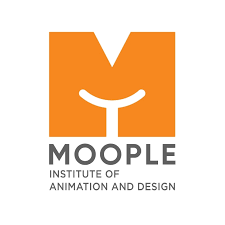If you have ever watched an animated film and thought, “I wish I could make something like that,” only to then shut yourself down because you cannot draw, this one is for you.
First things first, let’s clear a common myth right away: you do not have to be a skilled illustrator to become an animator. Many of today’s successful animators got their start without having any experience in drawing. What they did have, however, was a solid understanding of storytelling, visual sense and the technical know-how to realise ideas using contemporary tools.
The good news? With the right animation course, you can do it, too.
The New Face of Animation
Long ago, animation involved frame-by-frame drawings, hours hunched over paper, and intricate hand-drawn characters. But the terrain has changed significantly.
Animation is everywhere in the present day: 3D animations, motion graphics, CGI, VFX, game design, and more. All of these domains require different skills – some are more artistic, while others are more technical. However, now the rise of advanced software like Autodesk Maya, Blender, After Effects and Toon Boom has made it possible even for non-drawers to flourish.
The platforms are less about sketching and more about movement, structure, lighting and dynamics. That means if you know how to manage timing and rhythm, and if you know how to make the most out of digital tools, you are already quite ahead.
What Do You Need to Learn Animation?
These are the qualities you need to become a good animator:
- A creative vision and appearance-focused thinking
- A sense of timing and motion
- Sense of narrative and scene construction
- Knowledge of animation software
- An open mind to learn, refine, and explore
These techniques are usually learned in a structured animation course, where drawing might be an optional extra or supplementary skill – not a requirement.
Some top courses are devoted solely to digital animation, 3D environments, rigging and character movement. They are consequently ideal for those who want to ditch the sketchpad and get straight on with applying their talents.
Specialisations That Don’t Require You to Draw
Here’s a list of high-demand animation and design careers where you will hardly, if at all, be asked to draw:
- 3D Animator: Sculpting for computer-generated characters, environments, and motion design using applications like Maya or Blender.
- Motion Graphics Designer: Produced motion graphics for ads, film and digital – usually using Adobe After Effects.
- Lighting & Rendering Artist: Focuses on the way a scene appears, not what illustrates it. These include digital shading, texture and scene lighting.
- VFX Artist: Produces explosions, weather effects or other visual elements using specialised camera equipment and software for live-action footage.
- Compositor: Brings everything together in one final frame – integrates live-action and animated parts during post-production.
In all these skill sets, storytelling and software mastery matter more than your ability to create a character from scratch.
How an Animation Course Bridges the Gap
An animation course is a launchpad. No matter if you have a non-design background or are just trying out a new creative industry, the course syllabus covers everything from ground zero up to industry-relevant skills in a structured output-driven manner.
These courses teach you everything you need from understanding timelines to even learning basic camera movements in animation. More importantly, they allow you to build a portfolio which is the real ticket to getting noticed in the animation industry.
You will also get familiar with the techniques used by hands-on professionals in actual studios, as well you will also get to learn how to develop collaborative projects like a professional does.
Why Now Is the Ideal Time to Get Started
Skilled animators are sought across industries. Streaming platforms, gaming studios, advertising agencies and even ed-tech companies are on the quest for fresh animation talent. And, contrary to popular belief, they are not all looking for illustrators — rather a creator too who can visualise, execute and deliver powerful and effective digital content.
Whether you have just finished school and are looking to explore creative careers or are a professional looking for a change of career paths, pursuing an animation course today can help you secure a future-proof profession.
Also, animation is one of the few fields in which passion can become a paycheck – and a well-paying one at that.
Real Stories, Real Success
Many animation professionals you see credited in movies or games started just like you: curious, creative, and a little doubtful about their abilities. Some had been engineers who transitioned to VFX. Thousands were marketers who had discovered a passion for motion graphics. What they all shared was a willingness to learn and a good training ground.
Professional training in animation gives you that foundation — ordered lessons, professional feedback, real-world projects and peer feedback for you to evolve.
So no, drawing is not an absolute requirement. But commitment, imagination, and a willingness to explore? Non-negotiable.
Conclusion
The animation world today is open, lively, and packed with vantages for storytellers, tech enthusiasts, and imaginative souls. You do not need to be a wizard with a sketchpad to participate. You just need the right training and the right tools – and that is precisely what an efficient and well-structured animation program can offer.
If you are looking for the best animation course in Kolkata, Moople Academy is where you can start your animation journey. With an industry-driven curriculum, experienced mentors, and hands-on studio training in modern animation software, you’ll be ready to step confidently into the animation world — even if you’ve never drawn a thing in your life. Get in touch with Moople’s team today and bring your imagination to life.

